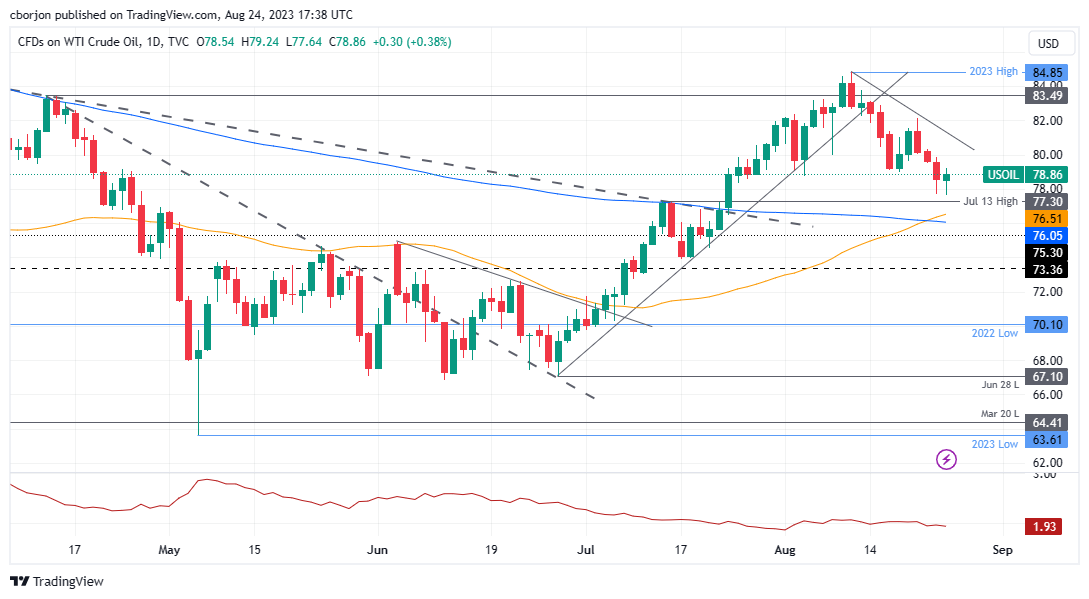- WTI crude oil rebounds, approaches $79.00 despite Fed’s hawkish remarks
Market news
WTI crude oil rebounds, approaches $79.00 despite Fed’s hawkish remarks
- WTI climbs to $78.80 per barrel, up 0.39%, as hawkish comments from the Fed initially dent but later fail to suppress oil prices.
- Iran announces plans to ramp up crude oil production to 3.4 million bpd by the end of September,
- The US and Venezuela discussed easing sanctions, which would increase global oil production.
Western Texas Intermediate (WTI), the US crude oil benchmark, prints a reversal, climbing to $79.00 per barrel on Thursday, as market participants turned risk-averse on Fed official’s hawkish commentary. Even though it boosted the greenback, oil holds to its earlier gains. WTI is trading at $78.89, up 0.39%.
WTI is up amidst strong US Dollar, Iran’s production plans, and the US easing sanctions on Venezuela
On Wednesday, S&P Global revealed that business activity in the Eurozone (EU), the UK, and the US deteriorated, suggesting dented oil demand for the future. Also, Fed officials led by Patrick Harker and Susan Collins at the Jackson Hole Symposium struck hawkish comments, emphasizing the fight against inflation while holding rates at current levels.
Although WTI dipped as an initial reaction, touching a daily low of $77.59, WTI bounced off those levels despite recent US Dollar strength.
In the meantime, Iran revealed that its crude oil production would reach 3.4 million barrels per day (bpd) by the end of September, as said by its oil minister, despite US sanctions still in place.
Another driver that boosted oil prices was an agreement between US officials and Venezuela to ease sanctions on the latter, allowing more US companies and countries to import their crude oil if the nation moves to free and fair presidential elections.
US crude oil inventories fell in the week to August 18, revealing stockpiles dropped 6.1 million.
Meanwhile, analysts expect Saudi Arabia to extend its 1 million crude oil production cut into October to boost global oil prices.
WTI Price Analysis: Technical outlook
US crude oil found its bottom just below the $78.00 per barrel figure, still at the expense of prices above the latter, as a golden cross in the daily chart portrays a bullish bias. However, as price action has achieved two successive lower lows, oil buyers must lift prices above the current week’s high at $82.13 so WTI can resume its uptrend and challenge the year-to-date (YTD) high of $84.85. Otherwise, further downside is expected below $78.00, with support emerging at $77.30, July 13 high.
